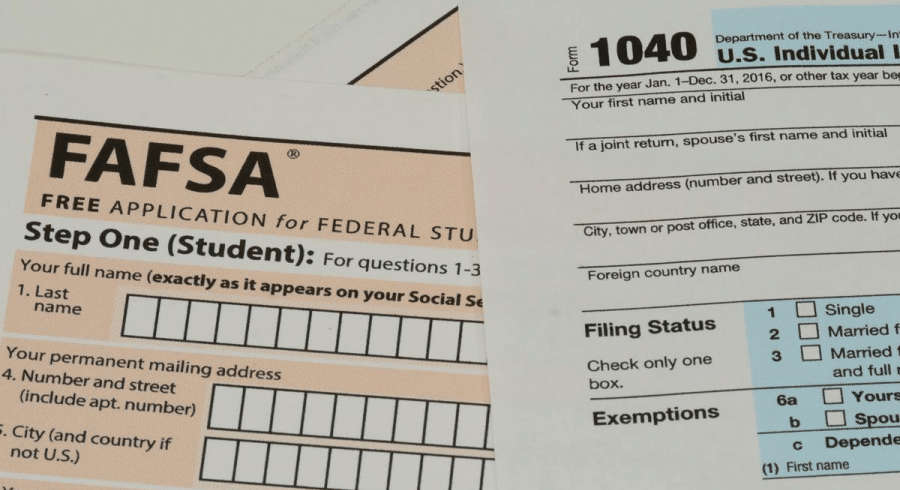
If you missed the first posts in this series, find them here: “Getting Started Simply: How the College Financial Aid Process Works” & “Long-Term Strategies for Paying for College“
Section 529 plans are tax-advantaged college savings vehicles and one of the most popular ways to save for college today. I recommend them to clients often because they offer a unique combination of features that no other college savings vehicle can match.
What are the advantages of 529 plans?
- Federal tax advantages: Contributions to your account grow tax deferred and earnings are tax free if the money is used to pay the beneficiary’s qualified education expenses. The earnings portion of any withdrawal not used for college expenses is taxed at the recipient’s rate and subject to a 10% penalty.
- State tax advantages: Many states offer income tax incentives for state residents, such as a tax deduction for contributions or a tax exemption for qualified withdrawals.
- High contribution limits: Many plans let you contribute more than $300,000 over the life of the plan.
- Unlimited participation: Anyone can open a 529 plan account.
- Professional money management: College savings plans are offered by states, but they are managed by designated financial companies who are responsible for managing the plan’s underlying investment portfolios.
- Flexibility: Under federal rules, you are entitled to change the beneficiary of your account to a qualified family member at any time, as well as roll over money from your 529 plan account to a different 529 plan once per year without income tax or penalty implications.
- Wide use of funds: Money in a 529 college savings plan can be used at any undergraduate college in the United States or abroad that’s accredited by the U.S. Department of Education and, depending on the individual plan, for graduate school.
- Accelerated gifting: 529 plans offer an estate planning advantage in the form of accelerated gifting. This can be a favorable way for grandparents to contribute to their grandchildren’s education. Specifically, a lump-sum gift of up to five times the annual gift tax exclusion ($14,000 in 2016) is allowed in a single year, which means that individuals can make a lump-sum gift of up to $70,000 and married couples can gift up to $140,000. No gift tax will be owed, provided the gift is treated as having been made in equal installments over a five-year period and no other gifts are made to that beneficiary during the five years.
How do I choose the right 529 plan?
You can join any state’s 529 college savings plan. To make the process easier, it helps to consider a few key features:
- Your state’s tax benefits: A majority of states offer some type of income tax break for 529 college savings plan participants, such as a deduction for contributions or tax-free earnings on qualified withdrawals. However, some states limit their tax deduction to contributions made to in-state 529 plans only.
- Investment options: Ideally, you’ll want to find a plan with a wide variety of investment options that range from conservative to more growth-oriented to match your risk tolerance. To take the guesswork out of picking investments appropriate for your child’s age, most plans offer aged-based portfolios that automatically adjust to more conservative holdings as the beneficiary approaches college age.
- Fees and expenses: Fees and expenses can vary widely among plans, and high fees can take a bigger bite out of your savings. Typical fees include annual maintenance fees, administration and management fees (usually called the “expense ratio”), and underlying fund expenses. Compare the costs among plans using Savingforcollege.com.
- Reputation of financial institution: Make sure that the financial institution managing the plan is reputable and that you can reach customer service with any questions.
How do I open a new plan account?
Once you’ve selected a plan, you’ll need to fill out an application, where you’ll name a beneficiary and select one or more of the plan’s investment portfolios to which your contributions will be allocated. Also, you’ll typically be required to make an initial minimum contribution, which must be made in cash or a cash alternative. Thereafter, most plans will allow you to contribute as often as you like. This gives you the flexibility to tailor the frequency of your contributions to your own needs and budget, as well as to systematically invest your contributions.
What is a 529 prepaid tuition plan?
There are actually two types of 529 plans–college savings plans and prepaid tuition plans (prepaid plans are the less popular type). The tax advantages of college savings plans and prepaid tuition plans are the same, but the account features are very different. A prepaid tuition plan lets you prepay tuition at participating colleges at today’s prices for use by the beneficiary in the future. The following table describes the main differences:
| College Savings Plans | Prepaid Tuition Plans |
| Offered by states | Offered by states and private colleges |
| You can join any state’s plan | State-run plans require you to be a state resident |
| Contributions are invested in your individual account in the investment portfolios you have selected | Contributions are pooled with the contributions of others and invested exclusively by the plan |
| Returns are not guaranteed; your account may gain or lose value, depending on how the underlying investments perform | Generally a certain rate of return is guaranteed |
| Funds can be used at any accredited college in the U.S. or abroad | Funds can only be used at participating colleges, typically state universities |
Note: Investors should consider the investment objectives, risks, charges, and expenses associated with 529 plans before investing. More information about specific 529 plans is available in each issuer’s official statement, which should be read carefully before investing. Also, before investing, consider whether your state offers a 529 plan that provides residents with favorable state tax benefits. As with other investments, there are generally fees and expenses associated with participation in a 529 savings plan. There is also the risk that the investments may lose money or not perform well enough to cover college costs as anticipated.
Source: Broadridge Investor Communication Solutions, 2016.





